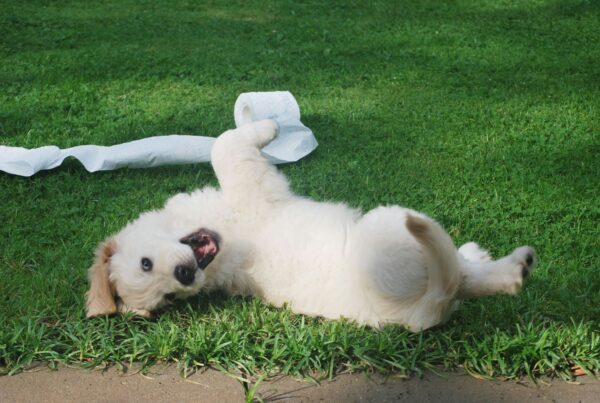A few years ago, I took in a cat from a friend who moved away and couldn’t bring the cat with her. The cat was originally a barn cat, living in an empty barn in rural Maine, and she’d taken it in. It had never been to the vet, certainly had no pet insurance, and its history was a mystery. She’d had the cat for less than three months when she gave it to me. Once moved into my home, the cat, Henry, meowed incessantly. It was hard to get work done, or nearly anything done, due to Henry’s behavior. He wanted to go outside and he wanted constant attention while inside. After a month of getting nothing done, I signed Henry up for cat insurance. Then, everything changed.
I was able to quickly, cheaply, and easily tackle the first major issue: Henry wasn’t neutered. Not only did I get him fixed, I also learned a lot about the benefits of doing so, how it makes a cat more comfortable and happy, thus resulting in a better behaved cat overall. This was the first lesson I really learned about being a cat owner, but through my pet insurance and the vet care it afforded me, I haven’t stopped learning since. Here are some of the expert tips and tricks I’ve picked up over the years with Henry and Scout and Atticus, the two other rescue cats who’ve joined the family since.
Get Your Cat Fixed
It seems obvious, but I’m going to start here. I want to dive a little deeper into Henry’s behavior before he was fixed. I live in a small college town, with other houses with pets nearby. In the month or so before he was fixed, Henry realized quickly that there were other cats (presumably female) around. Many of them walk around freely outside; it’s a safe town. Henry, of course, couldn’t do that without being fixed. So he would sit by the door or by any window and meow with such volume that it was as close to a scream that a cat can get. It was constant. He was so desperate to get outside and be with the other cats that he seemed almost physically uncomfortable because of it. Turns out he was.
My vet explained to me that cats have the urge to spray when not neutered or spayed. They’re constantly fighting off natural animalistic urges, and, as even a human can imagine, that’s probably not very comfortable for them. This explains the loud, constant meowing. A cat is physically uncomfortable in this state, and they’re begging for help or relief. Cats (and dogs) also have strong urges to roam away from home before being fixed, which further explains the loud wailing and sitting by the window. In general, getting a cat fixed is about a lot more than just avoiding ending up with an unexpected litter of kittens. It’s about the cat’s comfort and quality of life. A more comfortable cat is a better behaved cat. Henry is now calm, quiet, and perfectly content inside our home.
Groom Regularly
The first time you see a cat cough up a hairball, it seems a little concerning. The choking and heaving motions had me scratching my head, wondering if the cat was sick or if I needed to intervene. Obviously, coughing up hairballs is a natural practice for cats as they lick themselves for cleaning. But if you regularly groom your cat, they won’t have to go through the heaving hairball ejection quite so much, as brushing the cat every so often will help get rid of some of the dead or detached hair before they lick it off themselves.
Keep Up With Its Litter Box
Cats are smart, clean animals (hence the regular self-cleaning). If you’ve seen a cat go to the bathroom outdoors, you’ve likely noticed they dig into the ground before and cover it up after. They do the same in self cleaning litter box. So if a litter box has been used too much, going to the bathroom will be an unclean and unpleasant experience for them, and this might result in them resorting to other spots in the house to go (like plants, or even the bathtub). If you want a clean, well-behaved cat that isn’t peeing on your piles of folded clean clothes, keep up with litter box maintenance.
However, if the litter box is clean or not dirty enough that it should warrant urination outside of it, take notice if the cat is choosing to go elsewhere. This could be a sign of a UTI or other illness, and if you have cat insurance, a quick exam at the vet might be worth it. My cat Atticus began peeing in our bathtub, which was unusual behavior for him. We took note, asked our vet, and got him treated for his UTI in no time.
Have at Least One Scratching Post/Scratching Surface
Though it might feel like it sometimes, cats aren’t just scratching at your furniture for fun. It’s actually an important way for them to take care of their claws. Rather than needing their nails clipped, they’ll take to a surface to scratch off the old layers of their claws. The standing and scratching motion also serves to give their muscles a good stretch. If they can go outdoors, they’ll often scratch at the base of a tree. But indoors, if they don’t have a scratching post, they will take to your furniture. So get a scratching post, or a couple, and get some sprayable catnip to get them interested in the post. Once they get accustomed to using it, they’ll rarely go for the furniture.
Get Your Cat’s Teeth Cleaned
Just like dogs (and humans), cats need their teeth brushed. But cats can be a little less receptive to an at-home teeth brushing than dogs (and humans!) are. This is where, once again, cat insurance comes in handy. Cat insurance often has an option for preventative care, which includes teeth cleaning at least once annually. This is important to maintain a healthy mouth and hopefully avoid gum disease, tooth decay, and any other health issues that could result from mouth bacteria entering the bloodstream. It’s worth a trip to the vet for dental care. Your cat will thank you later.
Provide Fresh Water
It can be easy to put a bowl of water out for the cat and then forget about it, until you return to it a couple of days later and find food particles and hairs floating around in it. If you don’t want to drink it, your cat probably doesn’t either. But if desperate, they will. Don’t make your cat resort to that. This is one of the easiest cat care tips I can provide: each morning, fill up your cat’s bowl with fresh water. They’ll stay hydrated and be happier and healthier for it. If you’re forgetful (many of us are) or too busy, consider an electric cat water fountain that regularly provides clean water for the cat. It’ll stay on top of it even when you can’t.
photo credit: https://unsplash.com/photos/5LVbbG74ykI
Love our content? Share it with a friend or link it to social media. Like short clips of cute household pets? Training tips? Follow us on instagram @nydognanny or on YouTube at nydognanny. Have some news you needs to get to dog and cat parents stat? Email info@newyorkdognanny.com with your article pitch.




